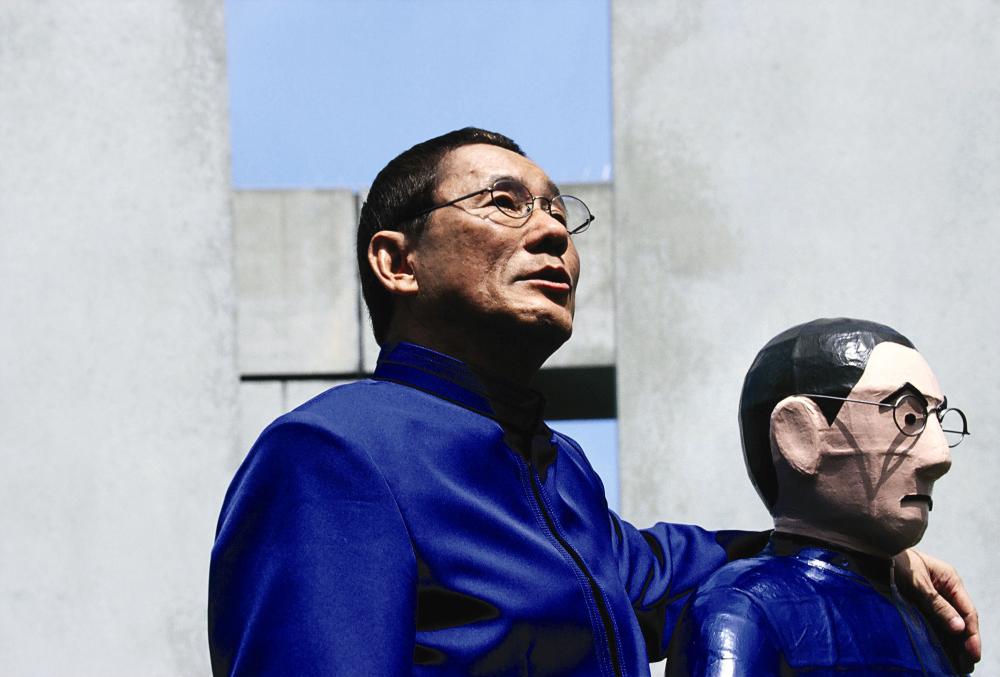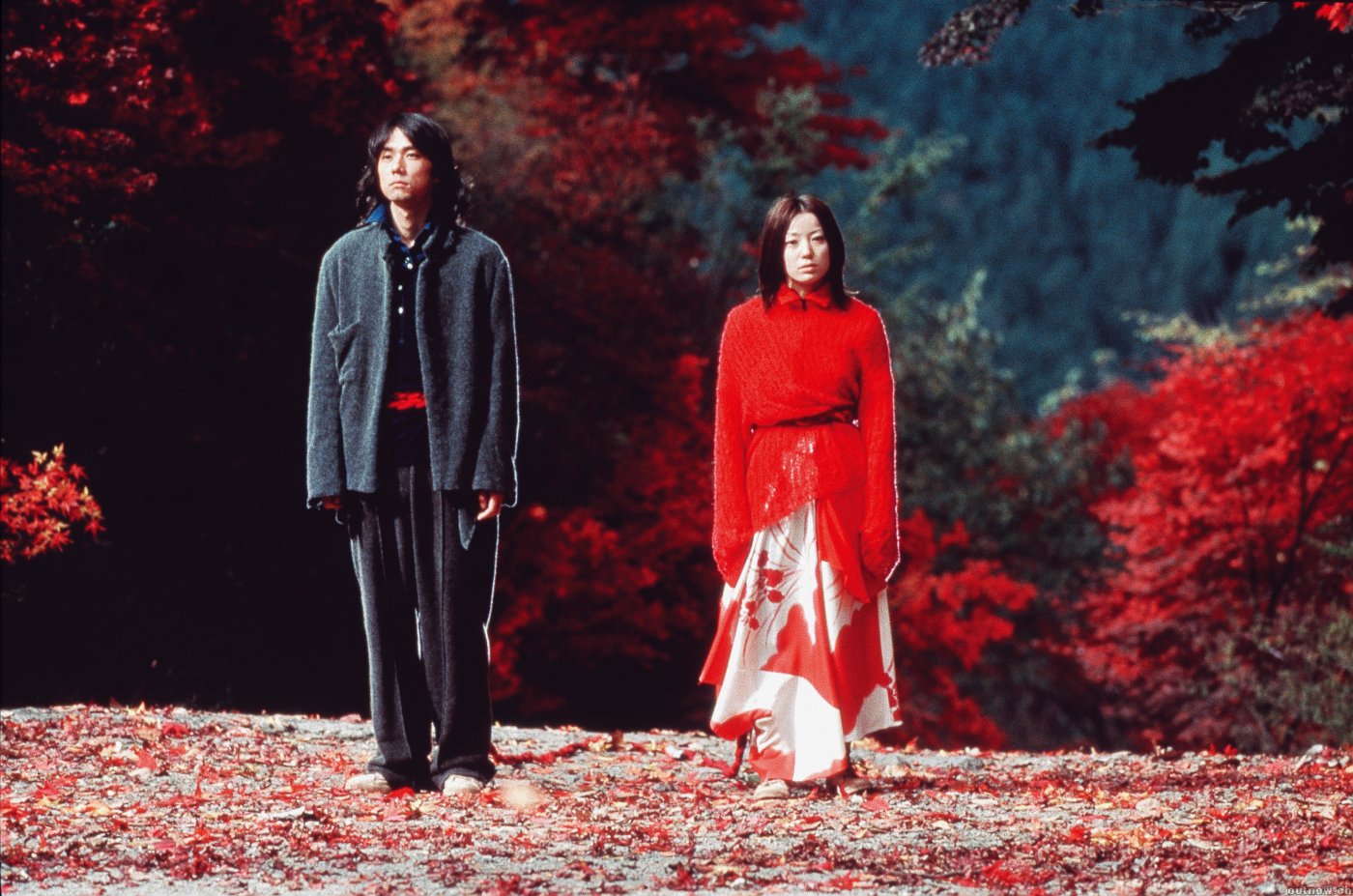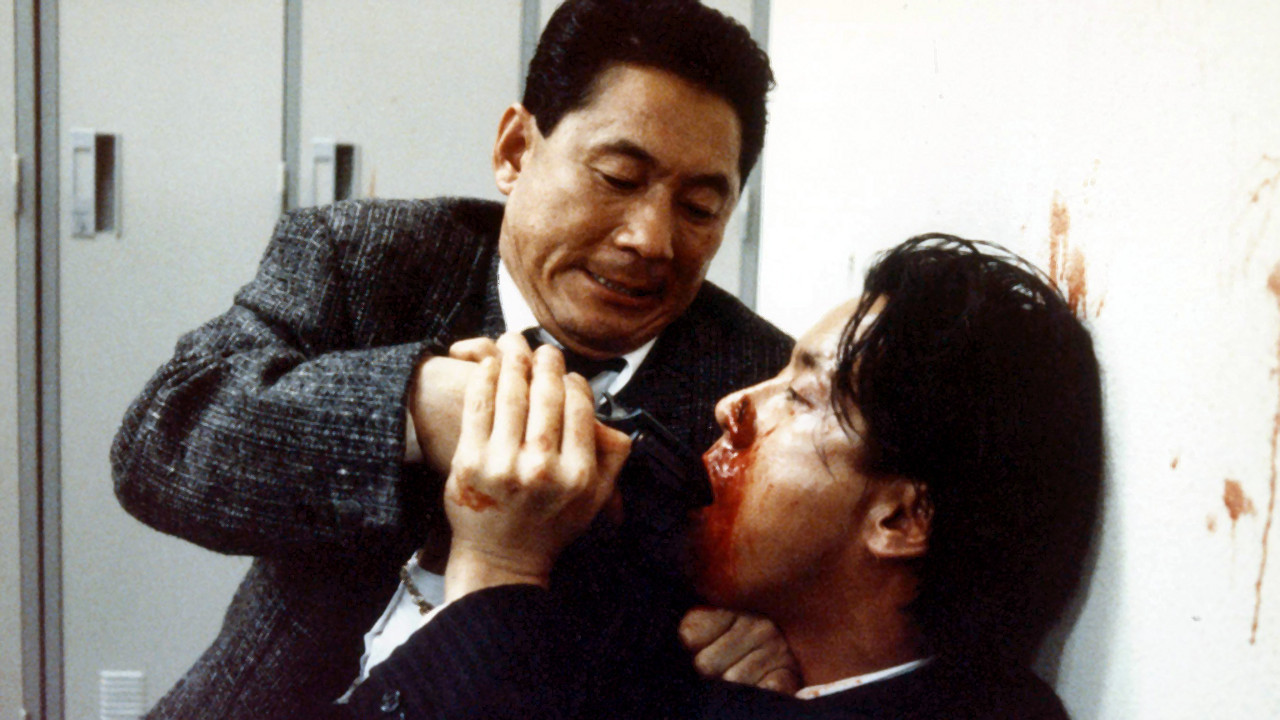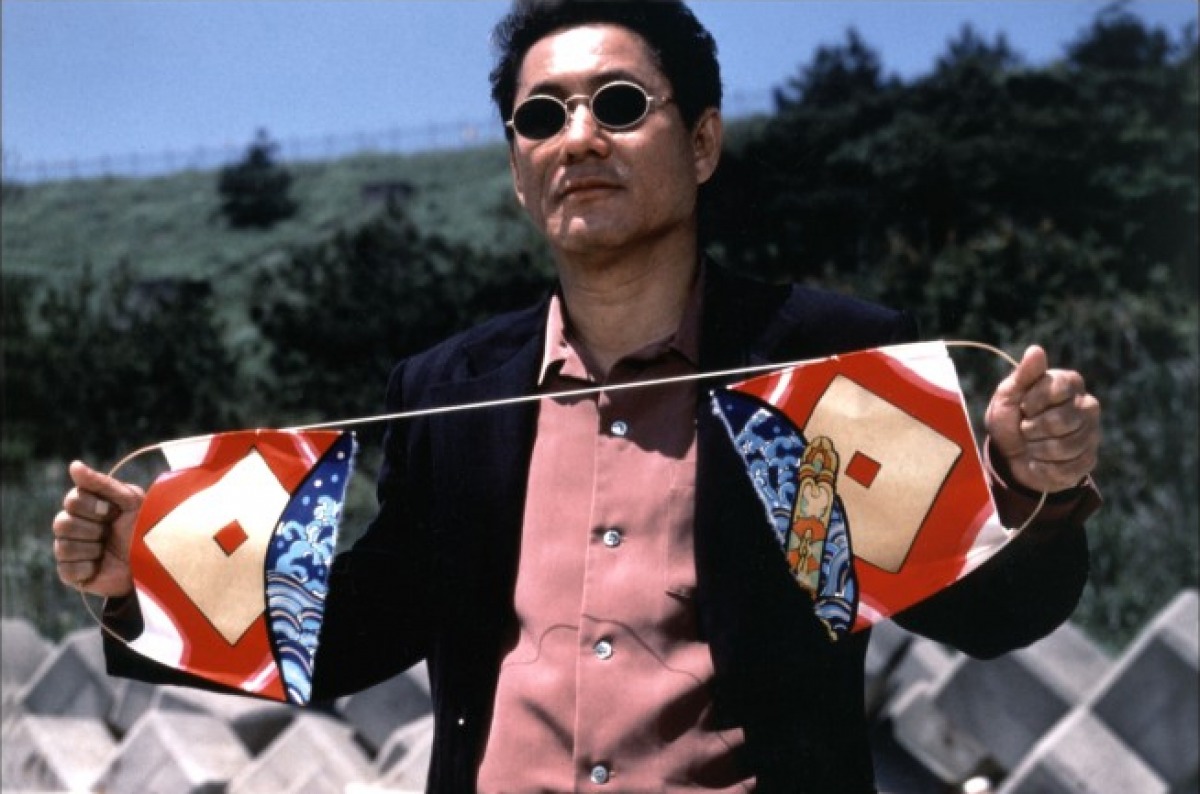6. His humour lingers under the surface

Kitano doesn’t employ a type of humour that makes his audience laugh to tears. His comical side is subtle and refined, unexpected and abrupt. As he has stated in one of his interviews: ”Humour is like violence. They both come to you unexpectedly, and the more unpredictable they both are, the better it gets.” Seems like this phrase perfectly captures the humorous nuances of Takeshi and that is because, in his films, comedy goes hand in hand with violence, enforcing it, fuelling it or watering it down.
It’s no rare occurrence for a Kitano’s movie hero to spit out a witty comment while ruthlessly beating up an enemy or a friend. This is not done, though, in the cucklesome and self-righteous way that someone would encounter in an American film. His humour is not pompous but shape-shifting, always compatible with the style and aesthetics of his movies.
In violent scenes, the droll gestures and utters of the protagonists make their savagery even stronger. We are not talking about a type of violence that is too obvious and graphic. It is undercover and for this reason more psychologically piercing and fierce in its realism. In other instances the humour pauses the violence for a brief glimpse of humanity. In these moments the spirit of the film becomes bitter-sweet and moving. That is what happens in films like Hana-bi, Kikujiro and Sonatine.
But Kitano also has an absurd side, hilarious and goofy, contrasting but never negating his vigorous realism. Examples of his surrealism can be traced in the sumo-wrestling sequence of Sonatine, the dreamy sorrowful scenes of Dolls and the rich comedic instances of Glory to the Filmmaker!.
7. The dramaturgical use of body movement

It was mentioned above that Takeshi’s performances resemble the ones of the actors of the silent cinema era. That is partly because of the stillness and internal acting of his actors’ faces but is also based, to a large extent, on the unique use of their body movements.
Takeshi’s actors, pretty much like himself, transform their bodies into big living and moving dolls. Their movements seem to be mechanic, their hands aimlessly hanging, dragging their feet in a melancholic but emotionless way. This dramaturgical choice makes them look detached from their realities but not in an artificial or too conspicuous way. On the contrary, it perfectly supports Kitano’s realism and minimalism, as there is no over-abundance of action and exertion.
The corrupted yakuza or police enforcers, that the director favours to represent, are the perfect example. Their lack of body movement, contrasting the active nature of their professions, points towards the futility of their existences. For them pursuing, torturing and killing is their routine and there is nothing vivid and glamorous about it.
Another example can be found in Dolls, where two of the main heroes spend the largest past of their story silent, tied to each other with a rope and aimlessly moving through the alluring landscapes of Japan. There is no movement or sound, and the highly emotionally charged atmosphere is given through the small breaks of the heroes’ inexpressiveness and the environment changes that seem to reflect their numb but still alive inner worlds.
8. Violence

Violence has an organic role in Kitano’s films. It is not employed to merely have a shocking effect or to impress and it is never stylised or lyrically choreographed. Using Kitano’s own words: ”I intentionally shoot violence to make the audience feel real pain. I have never and I will never shoot violence as if it’s some kind of action video game.” His statement perfectly befits his vision for creating films that are realistic to the core.
There is no embellishment of the dark and ruthless deeds of the heroes, their actions are obviously hollow and their fatal consequences are there to prove it. Takeshi’s violence, therefore, attains a more social and political character. It is the inevitable outcome of a society who doesn’t motivate its individuals, being unable to push them to do something fruitful and productive.
The gangsters, the aimless youth, the depraved law enforcers; they all become cold-blooded criminals in the absence of a purpose in life. And that’s when brutality becomes the cruellest, when it has no catalysts and it has become a mere habit.
Kitano has realised, from his very first film, that violence has the capacity to articulate a multitude of emotional nuances. That is precisely why it takes so many different shapes in his movies, instilling their appearance and content. It resides in the acts of his heroes, their coerce utterances, the sudden and unexpected cuts of the editing or the sound of a hysterical laugh.
9. The dominance of close-ups

Filmmakers have always taken advantage of the emotional capacity of the human face, its power to encapsulate experiences, impressions and needs. Kitano has been traditionally using the faces of his actors and actresses as platforms on which he builds the subtle intensity of his films.
Just like with the body movements, the facial performances of his heroes is laconic but powerful. The interplay between the absence of expressiveness, that is constantly present, and the sudden breaking of its silence with modest smirks, frowns and blinks establishes an aesthetic balance that is moving and poignant.
One can hardly forget the heart-breaking crying outburst of the heroine of Dolls, when she loses a part of the toy that she loves so much. Her generally unmoving face , a mask of melancholic oblivion, suddenly becomes malleable in the unexpected appearance of a child-like emotional reaction.
In the minimalistic context of the cinematic world of Kitano, such instances showcase his ability to give birth not only to violent or humoristic scenes but also deeply sentimental ones. In respect to a theatrical way of directing, the faces become masks that fall to uncover the other side of the coin of human detachment and indifference.
10. Flirting with melodrama

Kitano’s movies flow with smart and refreshing contradictions. His violent yakuza films are mixed with absurdity and humour and his comedies with documentary elements. But one of the weirdest things with Takeshi is his choice to flirt with melodramas, injecting their spirit into plenty of his films. Japanese cinema, after all, has a long history of melodramatic narratives and the director follows this tradition in his own anarchic way.
It is plain to see that there is not enough space for sentimentalism in Kitano’s movies. Emotions are present and felt by the viewer but they are certainly not mediated in a way that would be in accordance with a generic melodramatic formula. But such instances make their appearance, partly disguised, in a way that unveils the director’s ingenuity and his ability to adopt and modify heterogeneous filmmaking styles.
One of his most melodramatic films would undoubtedly be Hana-bi, recounting the story of a police detective who has lost his daughter and now has to deal with leukaemia, that tortures his beloved wife. The man deeply cares about his spouse, spends as much time as possible with her, taking her for walks across the beach. At the same time the detective’s best friend is a handicapped man, who was abandoned by his wife after a nearly fatal accident.
All of the main characters of the film are tragic heroes, in their own way, and their pain is heard out loud. Their sorrow, combined with the film’s aesthetics, that looks as if ripped out of the 80’s, and the sad music of Joe Hisaishi (Kitano’s collaborator for five of his films) contribute to the creation of an originally moving melodrama that is heart-breaking without forcing any emotions.
Author Bio: Angeliki is currently a student in the Master’s Programme in Cinema Studies in Stockholm’s University. She spent hundreds of hours watching Asian films but at the same time she keeps herself up to date with new releases of European and American Indie movies.